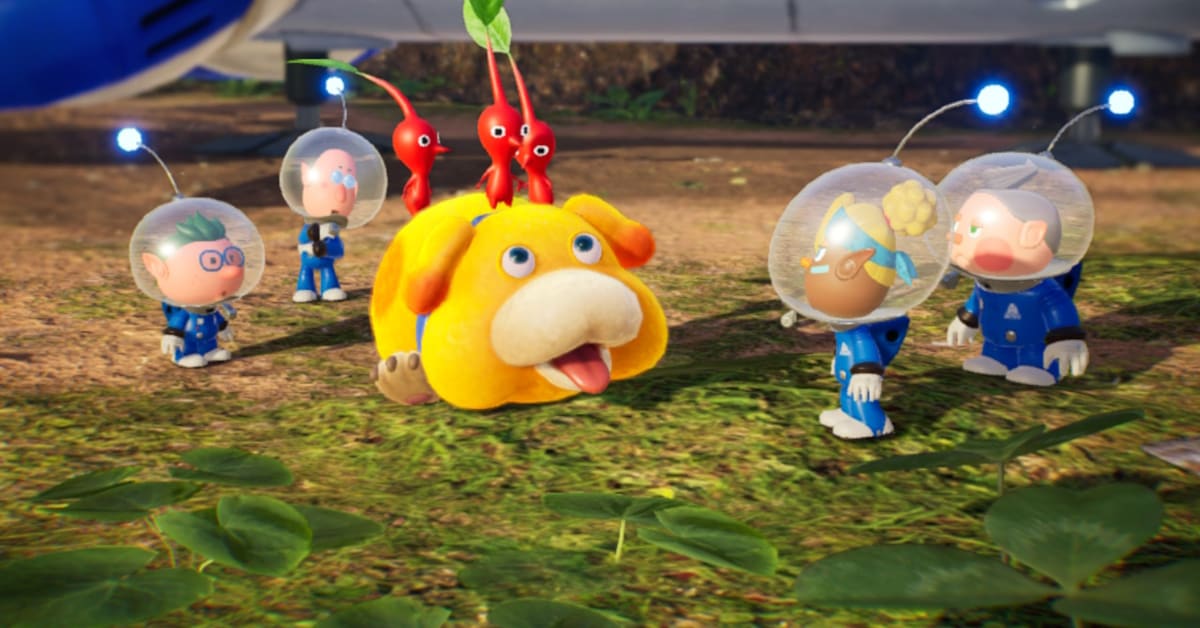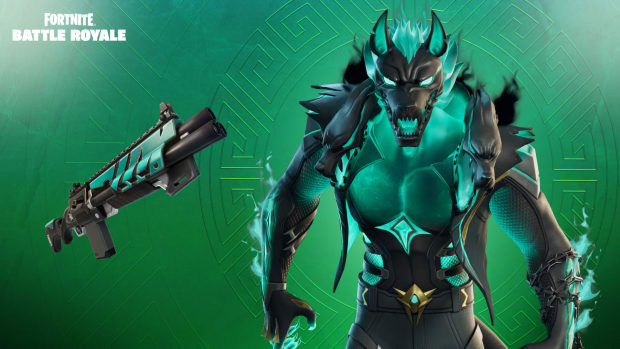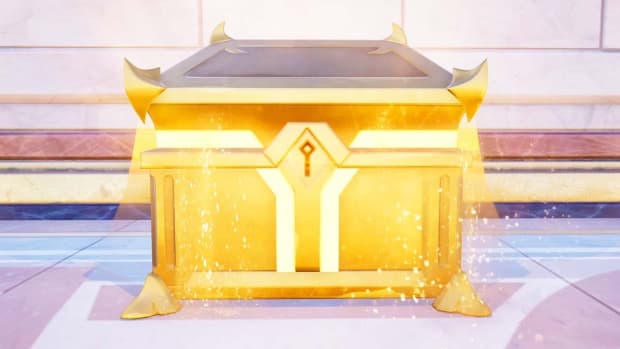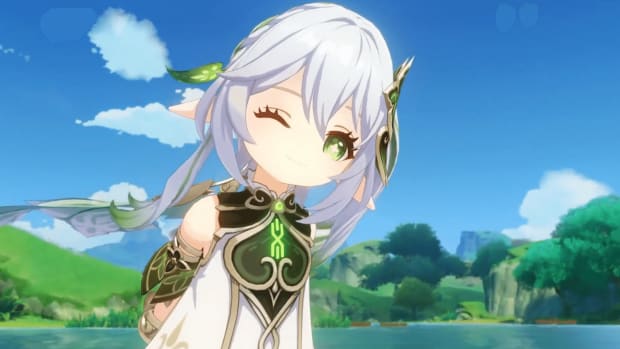
Pikmin 4 review: Signs of new growth
You’d think after two decades of throwing sentient radishes at goggle-eyed frog monsters again and again, you might get a little bored of it. Nintendo gave nearly every first-party franchise an overhaul during the Switch era, from Zelda’s foray into open worlds to Xenoblade Chronicles 3’s more thoughtful story, and at first, I thought Pikmin 4 would be the exception. I was very wrong. Pikmin 4 changes the series in quiet ways, and while it still has some distance to go before fully and effectively reinventing the series, it’s an excellent start.
Or it is once it is you get past the beginning, at least. Pikmin 4’s opening segments made me actively dislike it. Extensive tutorials for inexperienced players are fine, but Pikmin 4’s blocked me from exploring and learning for myself, and Olimar even chastised me for not moving quickly enough. “We have enough Pikmin now!” No, little alien man, we have enough Pikmin when I say we do.
While you’re learning how to move the camera and the other essential basics for rescuing hapless explorers, Pikmin 4 shoves two of the most important facts about the game to the side: the time limit and the rewind feature.
Nintendo’s approach to Pikmin’s structure changed with each game. Pikmin 2 gets rid of the time limit, but without changing the rest of the formula, it turns into something like New Super Mario Bros. 2 – collect as much as you can, just for the sake of it. Pikmin 3 adds a flexible limit you can cheese by going on fruit-finding expeditions, so there’s basically no limit.
Pikmin 4 does something completely different, and it feels like the start of a winning idea. There’s no time limit, but there are puzzles, secret areas, and extra castaways to spend your days tracking down. You may not have to approach each day with the best strategy in mind anymore, but it ends up being more fun anyway.
Poor choices in earlier Pikmin games meant restarting the entire day and losing a chunk of time. Nintendo presumably meant to heighten the tension with the lack of save options in earlier games, but since it just meant restarting or playing to scout the area before reloading and doing it for real, it was an artificial challenge at best. Pikmin 4 sweeps that away and lets you rewind time to certain points earlier in the day or the moment when you land on the planet again
I rarely 100% anything in games, including Pikmin, but the mix of no time constraints, rewinding, and worlds with things worth uncovering pushed me to do as much as possible in each stage.
Once the rescue crew steps back a bit and lets you explore, you finally get a glimpse at the beauty of Pikmin 4. That’s literal and metaphorical. Pikmin 4’s beaches, gardens, and backyards are gorgeous, full of vibrant colors and soft hues that help create the series’ strongest visual identity to date.
Nintendo also integrated the setting into your moment-to-moment action in an elegant way this time. Sun-Speckled Terrace, the first stage, is a backyard garden, filled with gentle slopes and small ledges that teach you the basics of ordering your Pikmin around effectively. The second stage encourages you to manage resources efficiently and quietly pushes you toward certain Oatchi talents, adorably called Pup Powers, without dragging you by the hand.
Training Oatchi requires you to rescue castaways, which involves exploring more in each area, finding more Pikmin, and basically experiencing every part of Pikmin 4 – not just the main path.
Dandori challenges pop up frequently in the middle of all this and pit you against a leaf-headed opponent whose Rescue Pup companion looks suspiciously like Olimar’s. They’re nice little distractions that, on higher difficulties, make you think carefully about dividing your Pikmin forces, but Pikmin 4 shoehorns them in at odd moments. I often found myself deliberately leaving them at the bottom of my to-do list just so I could finish doing what I wanted before having to spend five minutes on the mini-game.
I usually don’t care much about a game’s difficulty, but Pikmin 4’s odd balance makes it tough to overlook. Oatchi does make things a bit easier, though he’s essentially just a giant Pikmin, one with even more vulnerabilities. Even without Oatchi’s help and the Ice Pikmin’s handy freezing ability, though, dealing with enemies seems easier than in previous games.
That’s partly down to a lack of enemy variety and even enemy numbers in the first few levels, but I’m almost certain that Pikmin hit harder in Pikmin 4 as well. Each level’s mostly open design means you have fewer obstacles to contend with and – ironically, given the prominent position Pikmin 4 gives dandori – fewer situations where you have to multitask effectively.
The back half of the game and the final two stages make some big changes in this regard, but for a while, it almost feels like a loss of identity. Or it would if Pikmin 4 weren’t seemingly trying to create a new identity, one built around exploration more than strict strategy and management. The stages need more puzzles and points of interest before it can really reach that point, but Pikmin 4 still helps create a solid foundation for what comes next.
Joy is part of that identity as well. It sounds odd to call a game where death is just around the corner joyous, especially when you’re the one taking lives most of the time. Pikmin 4 is full of joy, though, and it’s laced in with nearly everything you do. Mornings start with a buoyant little tune and Oatchi bouncing over to greet you. Pikmin chirp, pik, and pop alongside you, happy just to be alive. You raise an army of vegetables and send them to kill wildlife, so while Pikmin 4 technically can’t fit the definition of a cozy game, it gets pretty close.
Even while missing some of the challenge from earlier Pikmin games, I was happy to just vibe and hunt down treasures most of the time. The downside is how empty these areas feel once you’re finished with them. Having enemies respawn every day would just be annoying, but once the Bulbax and Progs are gone and you scoop up all but a few treasures, a feeling of distinct loneliness settles in.
Pikmin has always been a task-oriented series with less focus on setting, but the emptiness stands out in contrast to the emphasis on creating more realistic spaces and makes me hope Pikmin 5 finds a way to make its worlds feel alive.
Even with the empty worlds and the uneven approach to difficulty and puzzles, Pikmin 4 won me over with its charm. Sure, I miss the stronger emphasis on strategy, but roaming the dense woodlands and distant shores of a familiar alien beach with Oatchi and a crew of stalwart root vegetables is rewarding in itself. I just hope Nintendo leans into that exploration element even more in the next Pikmin.
Score: 8/10
- Story: 7
- Visuals: 9
- Audio: 9
- Gameplay: 8
Platform: Nintendo Switch
Pikmin 4 technical breakdown
Pikmin 4 runs pretty much flawlessly on Nintendo Switch. There is some asset pop-in on the more detailed stages, but it's cleverly disguised for the most part by the level design, which keeps you from being able to see too far over any distance. The framerate remained smooth throughout, and the visuals are vibrant and engaging, much more so than you'd expect on six-year-old hardware.







